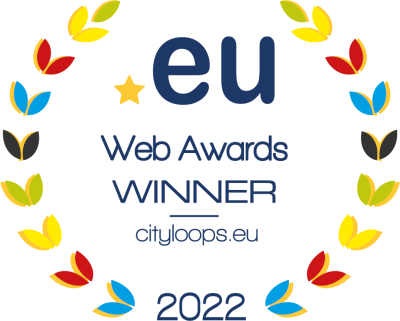Glossary
Circular economy
A circular economy is a global economic model that decouples economic growth and development from the consumption of finite resources. It is restorative by design, and aims to keep products, components and materials at their highest utility and value, at all times. (Ellen MacArthur Foundation, 2015)
The circular economy is an economy "where the value of products, materials and resources is maintained in the economy for as long as possible, and the generation of waste minimised". (Closing the loop - EU action plan for the Circular Economy (EC, 2015))
A perspective in which the economic value of materials is optimised over time. This calls for minimal raw material extraction, reintroduction of materials already in the economy and no waste. (WBCSD (2018))
Circular procurement
The purchase of works, goods or services that seek to contribute to the closed energy and material loops within supply chains, whilst minimising, and in the best case avoiding, negative environmental impacts and waste creation across the whole life-cycle.
Co-development
Development that implies significant influence and involvement of the stakeholders, who work together under a common framework to achieve a common goal. Active participation throughout all development phases. Not achieved in roles of consultation, observation, information or placation. (Ladder of participation)
Collaborative Learning Network
A group of parties in the area surrounding each demonstration city (in geographical proximity) who follow and learn from CityLoops’ experiences, with an aim to replicate if relevant (one per demonstration zone). Members of the group are involved in the sectors relevant to the demonstration actions and can contribute to broadening the scope of CE activities in the demonstration region.
Construction and demolition waste (CDW)
Any waste generated in the activities of companies belonging to the construction sector and included in category 17 of the European List of Wastes. In CityLoops, excavated earth (soil) is included as CDW.
Downcycling
Downcycling is a process converting materials into new materials of lesser quality and reduced functionality. (Ellen MacArthur Foundation (2015))
Green public procurement
A process whereby public authorities seek to procure goods, services and works with a reduced environmental impact throughout their life cycle when compared to goods, services and works with the same primary function that would otherwise be procured.
Life cycle assessment
A technique to assess environmental impacts associated with all the stages of the life-cycle of a product, process, or service - i.e. including raw material extraction, production, use, and disposal/recycling/reuse.
Material bank/databank
A material resource library, which contains information on a variety of material object types, properties, environmental quality, etc.
Material Circularity Indicator
A score between 0 and 1 to a product (or company) assessing how restorative or linear the flow of the materials for the product (or the company’s products) and how long and intensely the product (or the company’s products) is used compared to similar industry-average products. (Ellen MacArthur Foundation (2015))
Material Flow Analysis
A method to evaluate the material flows into and out of a system. (WBCSD (2018))
Material marketplace
A place or platform that facilitates the exchange of materials from one owner/use to another. Could be physical (i.e. warehouse of materials) or digital (database of construction products).
Material passport
Identification of a material’s history, content, quality (embodied carbon, structural capacity, toxicity), use, maintenance and reuse potential. Unique and linked to an individual object or component.
Replication zone
An area (especially in EU cities and regions not represented in the CityLoops consortium) in which tools and methods developed in CityLoops may be replicated, for example, Vallès Occidental and Murcia. Contact with these zones will be undertaken with the goal of disseminating CityLoops experience more widely, to encourage and enable the uptake and replication of CityLoops results.
Secondary materials
Secondary materials are those that have been used, recycled and sold for use in manufacturing. Typically they enable the displacement (avoidance) of primary/ virgin materials in the manufacturing process.
Sector-wide Circularity Assessment
An analysis of the circularity of the material flow for construction and demolition waste and/or food and organic waste. To be conducted by MoC in each demonstration zone, dependent on the available data provided by each city cluster.
Upcycling
A process of converting materials into new materials of higher quality, higher value and increased functionality. (Ellen MacArthur Foundation (2015))
Urban Circularity Assessment
A comprehensive circularity analysis of all major material flows (not only CDW/OW) in each demonstration zone. To be conducted by MoC in each demonstration zone, dependent on the available data provided by each city cluster.

